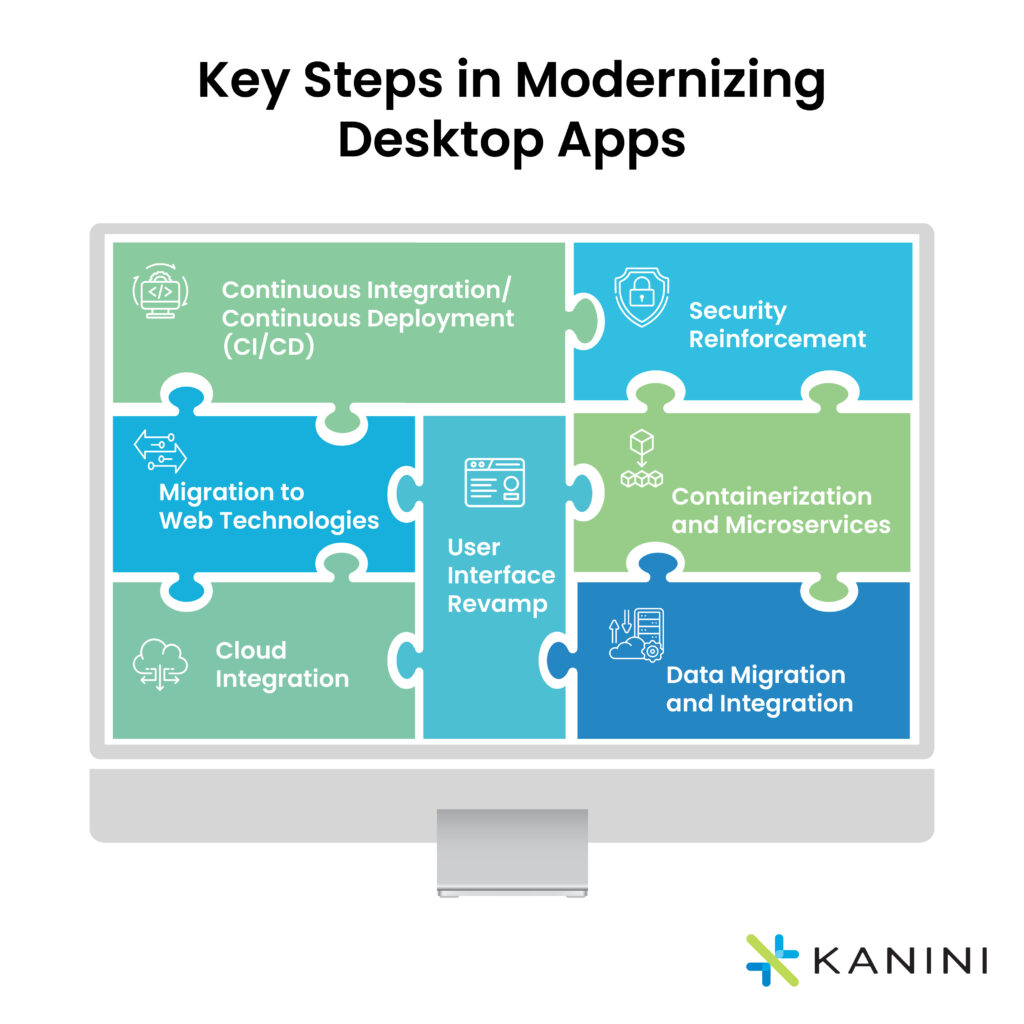In this blog post, we will explore the reasons behind this paradigm shift, uncover the shortcomings of traditional desktop applications, and explore the strategies and best practices for a successful desktop application modernization process.
Table of Contents
The Pitfalls of Desktop Applications
- Limited Accessibility: Desktop applications are tied to specific devices, restricting users to access them only from the machines on which they are installed.
- Maintenance Challenges: Updates and maintenance require manual intervention on each user’s machine, leading to potential compatibility issues and version disparities.
- Scalability Concerns: Scaling desktop applications to accommodate a growing user base can be cumbersome, often requiring significant infrastructure changes.
- Collaboration Constraints: Real-time collaboration is challenging with desktop apps, especially when users need to work on the same data concurrently.
The Legacy Desktop Application Archive
Now that we know why desktop applications are being taken on the road of modernization, let’s take a reflective stroll through the digital graveyard, acknowledging the software that shaped eras but ultimately succumbed to the winds of change.
1. Microsoft Visual Basic 6.0 (VB6)
In the heyday of desktop application development, VB6 was the primary for many developers. Its simplicity and rapid application development (RAD) capabilities made it immensely popular. However, as Microsoft shifted its focus to .NET and newer technologies, VB6 faced obsolescence. Organizations had to grapple with the challenges of legacy VB6 code, marking the end of an era in GUI-based application development.
2. PowerBuilder
3. Delphi
4. Adobe AIR
5. WinForms (Windows Forms)
Windows Forms, a stalwart in desktop application development on the Microsoft Windows platform, faced challenges in the wake of the industry’s shift towards web-based solutions. Organizations working with WinForms are now contemplating desktop application modernization strategies to adapt to the evolving landscape.
6. Oracle Forms
The lessons from these faded technologies basically illustrate the ever-changing demands of the software industry. The key to remain relevant is adaptability and continuous improvement. With this, it is safe to say that the first step in desktop application modernization is a mindset shift that needs to be incorporated, from wanting an offline, on-premises application to a more accessible, web-based application.
The Important Steps in Desktop Application Modernization

- Migration to Web Technologies: The first step is often a shift to web-friendly languages and frameworks, bidding farewell to the shackles of traditional desktop code.
- Containerization and Microservices: Think of it as giving your application a modular makeover. Containerization and microservices break down monoliths, paving the way for scalability and agility.
- Cloud Integration: The clouds aren’t just for daydreaming. Embracing cloud services like Azure, AWS, or GCP becomes the engine that drives seamless updates, backups, and superior performance.
- User Interface Revamp: Modernization isn’t just about functionality; it’s about looking good too. A fresh, intuitive interface is a must. Utilization of modern frameworks like ReactJS or AngularJS is highly recommended.
- Security Reinforcement: In a world full of digital threats, security is the knight in shining armor. Encryption, multi-factor authentication, etc. are a must to armor up for the modern age.
- Continuous Integration/Continuous Deployment (CI/CD): Automation is the name of the game. Streamline your development, testing, and deployment processes for a smoother ride, using CI/CD pipelines.
- Data Migration and Integration: Think of it as moving homes – plan your data’s journey carefully. Seamless transition and integration with other systems are the keys to success.
Mastering the Art of Desktop Application Modernization – Best Practices to Follow
- Comprehensive Assessment: Conduct a comprehensive assessment of your existing application. This involves not only understanding its functionalities but also delving into the intricacies of the codebase. Identify areas that need attention, untangle any webs of legacy code, and map out a clear understanding of your starting point.
- User Involvement and Feedback: Your users are not just spectators; they are active participants in modernization. Involve them from the outset. Seek their feedback, understand their pain points, and envision the modernized application as a reflection of their needs.
- Incremental Updates: Rome wasn’t built in a day, and likewise, modernization is a journey of incremental progress. Rather than attempting a wholesale transformation, break down the modernization process into manageable phases. Address specific modules or functionalities one step at a time.
- Cross-Platform Compatibility: In the age of diverse devices and platforms, don’t confine your modernized application to a single stage. Design it to work seamlessly across different platforms and devices. Consider responsive design principles, flexible layouts, and adaptive components.
- Documentation: Document every aspect of your modernization process – from the assessment phase to the final implementation. This documentation serves as a guide for your team and future developers.
- Testing, Testing, Testing: No shortcuts can be taken when it comes to testing during the modernization process. Rigorous testing at every turn is the linchpin of success. Implement comprehensive testing strategies, including unit testing, integration testing, and user acceptance testing.
- Performance Monitoring and Optimization: Keep a vigilant eye on the dashboard as your modernized application takes center stage. Regularly monitor performance metrics, identifying potential bottlenecks and areas for improvement. Optimization isn’t a one-time affair; it’s an ongoing process.
Wrapping Up
Author

Rajesh Thirunaukkarasu
Rajesh is a seasoned software professional with 18+ years of experience in IT Development, Project/Product Management, Application Development, Architecture & Design, Transition and Client Relationship Management. Currently, he is part of the product engineering practice at KANINI and leading AI/ML projects.








